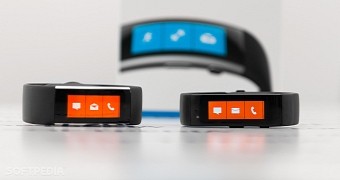Microsoft is getting ready to completely retire the Microsoft Band activity tracker, more than two years after the company actually stopped updating it.
Once an innovative activity tracker, Microsoft Band was supposed to spearhead Microsoft’s push in the wearable industry.
Despite not being positioned as a smartwatch per se, but more of an activity tracker, the device bundled one of the most advanced feature lineups at that time, including the typical heart-rating tracking, sleeping monitoring, and mobile notifications, but also the more exquisite HR zones and UV readings.
Many said the Microsoft Band was way ahead of its time, and this is one of the reasons Microsoft rushed to launch a second-generation model with an improved design and even more advanced features.
However, neither the first model nor its successor was flawless. As I said when reviewing them many years ago, the band design wasn’t the most comfortable for something that was supposed to be worn on the wrist 24/7. Or at least, not as comfortable as a typical smartwatch which features a design much more similar to conventional watches.
But when it comes to features, the Microsoft Band was impressive, to say the least. The third generation was expected to pack even more refinements that would have addressed all these setbacks, and also introduce new colors, which looked brilliant on Panos Panay’s wrist.
Nevertheless, the Microsoft Band 3 never came to be, and the device was eventually abandoned for good, with Microsoft focusing instead on the mobile apps that were available on both Android and iOS.
And now, the software giant gets ready to leave the Microsoft Band behind once and for all by killing off all the companion apps and the connected services, offering users refunds if they return their devices.
But while Microsoft is trying to step away from the wearable market, I still believe the company should be a part of it.
“Microsoft can be the new Fitbit.”
As I said before on several occasions, a Microsoft smartwatch would round up the company’s push for devices that allow you to stay productive and connected wherever you go. Microsoft already has the know-how to build an advanced wearable device, and the best of all, the Surface brand allows it to create an exquisite product that would easily be positioned as a rival to the Apple Watch.
Many people believe that the lack of a mobile platform that would back up the adoption of a smartwatch is a major problem. However, I don’t think this is true.
This is correct, Windows 10 Mobile would have helped Microsoft boost the adoption of a potential smartwatch – and the company knows this very well, as the canceled-before-launch Moonraker was supposed to come as a companion model for the Lumia 930 – but it’s not something that the software giant can’t survive without.
Fitbit and Garmin are the best examples. Fitbit is currently the second best-selling wearable device with total 2018 shipments of 5.5 million units. This is far behind rival Apple Watch, but it’s the runner-up without any mobile platform to support its adoption.
Just like the Microsoft Band, Fitbit models work with both Android and iOS, and a potential Microsoft smartwatch can overcome the lack of a native Microsoft mobile operating system with a similar approach too.
Right now, the way I see it, a Microsoft smartwatch would fit the Surface brand just alright and would give users another reason to become even more committed to the Microsoft ecosystem.
Needless to say, the demise of the Microsoft Band is by no means a confirmation that Microsoft isn’t planning anything on this front. But this is certainly the message that it sends.
Only time will tell if Microsoft believes smartwatches can be part of its future, but for now, many people just buy the Apple Watch. And if they buy the Apple Watch, they also have an iPhone. And if they have an iPhone, they’re one step closer to getting a Mac. And eventually, if they get a Mac, they stop using Windows.

 14 DAY TRIAL //
14 DAY TRIAL //